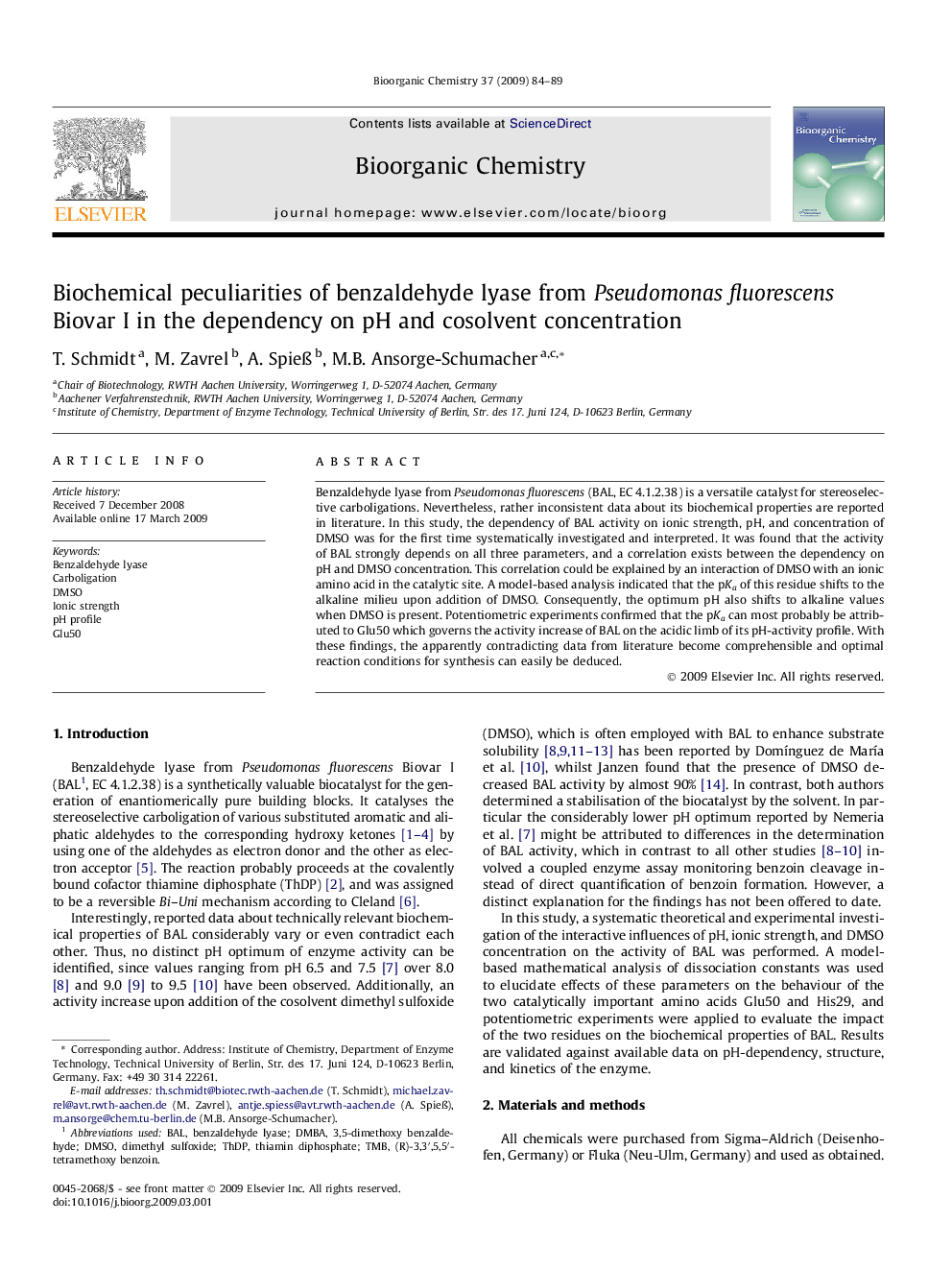| Article ID | Journal | Published Year | Pages | File Type |
|---|---|---|---|---|
| 1356486 | Bioorganic Chemistry | 2009 | 6 Pages |
Benzaldehyde lyase from Pseudomonas fluorescens (BAL, EC 4.1.2.38) is a versatile catalyst for stereoselective carboligations. Nevertheless, rather inconsistent data about its biochemical properties are reported in literature. In this study, the dependency of BAL activity on ionic strength, pH, and concentration of DMSO was for the first time systematically investigated and interpreted. It was found that the activity of BAL strongly depends on all three parameters, and a correlation exists between the dependency on pH and DMSO concentration. This correlation could be explained by an interaction of DMSO with an ionic amino acid in the catalytic site. A model-based analysis indicated that the pKa of this residue shifts to the alkaline milieu upon addition of DMSO. Consequently, the optimum pH also shifts to alkaline values when DMSO is present. Potentiometric experiments confirmed that the pKa can most probably be attributed to Glu50 which governs the activity increase of BAL on the acidic limb of its pH-activity profile. With these findings, the apparently contradicting data from literature become comprehensible and optimal reaction conditions for synthesis can easily be deduced.
Graphical abstractFigure optionsDownload full-size imageDownload as PowerPoint slide
